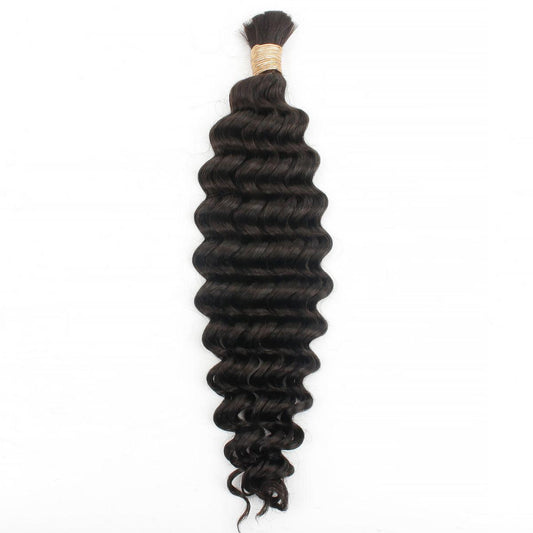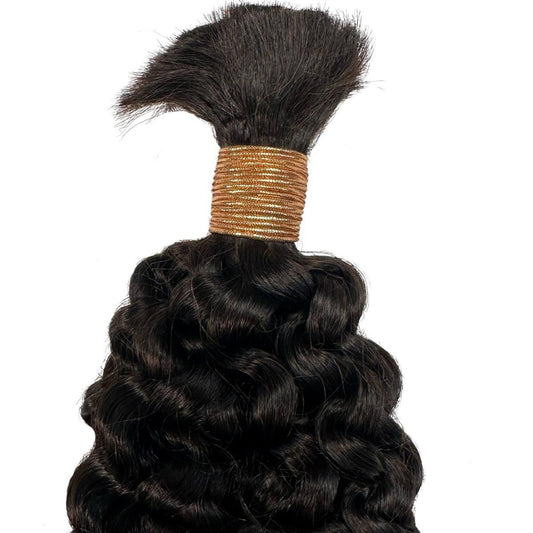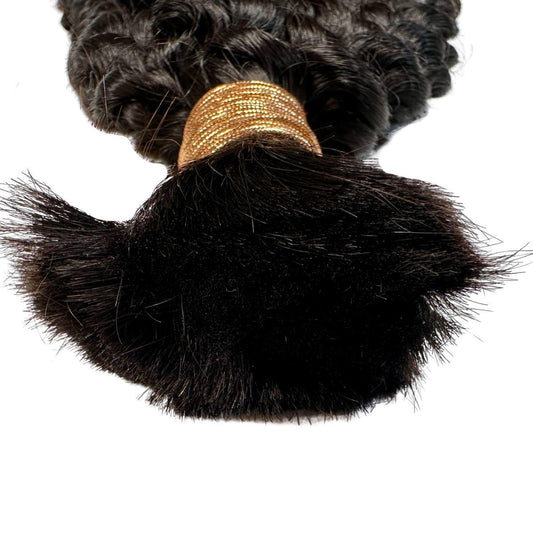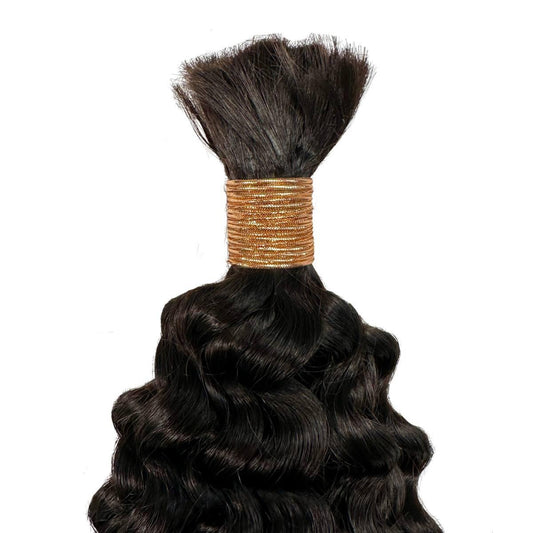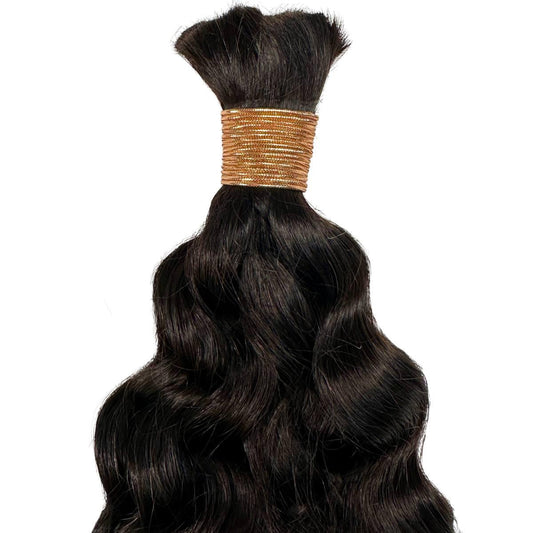1260 Memorial Drive
Atlanta, Georgia 30316
404-458-1330
9 Great Braiding Patterns for Your Next Sew-In Installation
Mikey MoranEvery time I have ever had sew-in hair extensions installed, I opted to get the regular cornrow pattern, which we call straight backs.
I assumed that straightbacks were the only way to get extensions properly.
It wasn't until I began paying attention to details, such as the way I part my hair or the way I wanted the hair to fall on my face. 🤦🏿♀️
Sew-in weave braid patterns matter if you're going to leave your hair out or if you'd like not to leave any hair out at all.
Let's get into these different sew-in braid styles.

Braiding Patterns We Are Going to Cover
- The Basic Braiding Pattern
- U-Part Crossover Pattern
- Vixen Braiding Pattern
- Micro Braiding Method
- Beehive Braiding Method
- Zig-Zag Braiding Pattern
- Asymmetrical Braiding Pattern
- Diagonal Braiding Pattern
- Braiding Pattern for Bangs
No matter the hair extension or the occasion, there is a plethora of different braiding styles and patterns available to use to your advantage.
Especially when looking for braid patterns for full sew-ins.
If you're someone who likes to plan out your style, then knowing your braid pattern before getting a sew-in is essential information to know.
There are plenty of different styles available where you can integrate braiding style and extensions and still look fabulous.
I'm going to give you the scoop on the braid bar, how you can achieve just about any form with the right braiding pattern, and the pros and cons of each one.
You'll also want to get the best braiding hair for your style!
If you've been wondering, there's no need to worry; I've got you covered!

What to Do Before You Braid
To ensure that you have a healthy and safe braiding process, follow these simple cleaning steps before braiding.
- Wash and condition your hair beforehand.
- If you relax your hair, I suggest that you don't get a relaxer at least a week before the braiding appointment.
- After a relaxer, your hair and scalp are susceptible, and braiding your hair will only damage your hair further.
- Before you braid your hair, make sure you trim your ends.
- Cutting your hair will increase your hair growth and keep your hair healthy as you tuck it away.
- If you're someone who's natural, try to blow dry and brush your hair so that it can stretch before braiding.
- Put your hair into Bantu knots or rollers if you're trying to avoid the heat.
- Make sure you moisturize your scalp so that it doesn't dry during the braiding process.

Learn to Braid Your Hair
Braiding hair has become more and more popular, especially since we've started doing styles that require hair extensions.
The price of braiding has also become more expensive due to the increase in popularity.
If you want to avoid costs, I recommend you learn how to braid your hair.
Knowing how to braid your hair will save you money that you can use elsewhere, and it will also give you the independence to do your hair when and how you please.
If you're not sure how to begin, you can watch braiding tutorials or follow these easy steps below.
- First, brush your hair with a paddle brush to remove any tangles.
- Section off the area of hair that you'd like to braid.
- Split the division into three parts. Lift the strand on the right-hand side over the middle strand so it's in the middle.
- Lift and move each strand with the same amount of pressure so that you don't have one that is too tight and the other loose.
Try not to braid it too close so that you don't damage your edges.
Also, don't get frustrated if you can't achieve it the first time since braiding your hair will take time to learn.
The best way to learn is through repetition and consistent practice. To secure the braids you've created, use an elastic band.

Braiding Patterns You Should Know
Basic Braiding Pattern
The basic pattern, in my opinion, is the straight-back cornrows.
Straight-back cornrows are great for any style. Straight-back cornrows are especially great for installing crochet braids, which are a type of extension style.
In fact, they are the best braid pattern for crochet braids.
The positive of this technique is that if you're going to someone to get your hair braided, then straight backs are also the cheapest version of braids that you can get.
Another pro is that some very sophisticated hairstyles can be achieved with straight ends, especially when it comes to hair extensions that aren't a weave, such as crochet.
The con is that straight-back cornrows don't give as much versatility as other braiding patterns do.
Also, keep in mind that you might need to sew down the ends of your cornrows to keep your hair from unraveling.
The parts and style you'll be able to do will be limited, but achieving this form will be easy.
U-Part/Crossover Pattern
A U-part or crossover pattern is similar to the traditional cornrow pattern except that multiple parts of the braid cross over into one another.
When achieving this style, you'll start with a straight cornrow and then cross the braids in the middle.
Using this method gives a more natural-looking leave-out, and it also helps you achieve a look that seems as though it's your natural hair.
If you're unsure of how to do this method, there are plenty of videos you can watch.
Also, to practice, just use the regular cornrow method and then try to intersect two braids at once.
The most significant pro with this style is that if you're someone who enjoys updo hairstyles, then this pattern is the best for extensions.
The biggest and most talked-about con with this method of braiding is the tightness of the crossover connection between the braids.
Vixen Braiding Pattern
The vixen braid patterns have become extremely popular throughout the years.
The vixen pattern requires four sections of hair.
These four sections of hair allow for a lot of different styling options, from ponytails to side parts to completely pulled-back hair.
This braiding option also provides for a leave-out that looks natural, and if you do it right or get someone to do it right, then you'll have a fabulous style!
The vixen pattern is the most difficult braiding pattern because it provides the most versatility. It's so versatile that it is even used as a crochet braid pattern.
To achieve the vixen style, for the four sections, braid into a beehive pattern.
And then, if you want to leave your hair out, don't braid around the perimeter of your hair.
If you don't want to leave your hair out, then braid around the edge of your hair.
There aren't many cons to the vixen method besides the fact that there is more tension in your hair.
With this braiding pattern, you can achieve a middle part sew-in (Check out this article: how many bundles for sew-in).
To avoid this, don't braid your hair too tightly, and be mindful of your hair when you put it into ponytails.
Keep in mind that the more hair you leave out when making a vixen pattern, the more maintenance you'll need to take care of your hair.

Micro Braiding Method
The micro braiding method uses way smaller cornrows, which means the braids will be much tighter.
Smaller cornrows are better suited for straight hairstyles.
The con is that this pattern of braiding is more tedious than other designs.
It's more tedious because the braids are smaller, and so are the strands of hair that you install.
Installing this method of twists will take longer, but it will look fabulous!
Beehive Braiding Method
In this method, you braid your hair into a circle until the end is in the middle of your head.
The pros of this approach are that it makes for a very versatile look as far as braids or twists.
This style won't be the best for straight hair since there is no actual part.
This method is excellent for curly hair, but only if you plan on having bangs that don't leave your face.
The bangs won't be able to part, so if you're not prepared for that, don't do this method.
The most prominent con of this style is that it doesn't offer much versatility, considering that it doesn't allow for much styling.
The pros are that when you put crochet twists/braids, they tend to look more natural.
This means that you can get the look of braids without actually having to sit through getting braids.
Zig-Zag Braiding Pattern
The zig-zag pattern of braiding can be a bit difficult to achieve, but it's one of the most utilized designs out there.
Zig-zag braids are great for any style.
The braids go horizontally across the scalp.
The zig-zag pattern is perfect for a look that has multiple layers, especially when sectioned correctly.
The pros of this style vary, but most people enjoy that they can achieve a versatile, layered look with this pattern.
When doing a sew-in, if you're using a stylist, they'll be able to install your weave in a way that looks natural.
Another positive of the zig-zag pattern is that it can be done in different ways so that you can have different kinds of parts.
The most significant con of this style is that it's difficult to take out during the take-down process.
It's also very tight because of the versatility of the design. However, if you find someone who's willing to be attentive to your hair needs, you should be fine.

Asymmetrical Braiding Pattern
This asymmetrical look is the best pattern for side parts.
When you have an asymmetrical braiding pattern, the braids go around your head and then transform to straight backs to give you a broadside part and create a beautiful look.
If you're looking for a hairstyle with an asymmetrical design, then this pattern is an excellent choice.
The pro-factor of this trend is that you can wear any style, from braids, curls, different straight sew-ins, and twists with a cool-looking side part.
There aren't many cons to this method.
Typically, the braids can be done big enough so that they won't be too tight, but they can still maintain the styles you desire.
Diagonal Braiding Pattern
As hair extensions outside of weaves and wigs become the latest style, unique braiding patterns have become the most excellent way to achieve different styles as well.
A diagonal braiding pattern is much like a straight-back pattern, except it goes back to the end of your head on a curve, almost like a swoop.
This braiding style allows you to wear hairstyles with swooped bangs.
This technique, much like the other styles I mentioned, is excellent for ponytails and high buns.
Braiding Pattern for Bangs
Even though all of these styles, outside of the straight-backs, are great for bangs, this particular form is the best way to achieve bangs.
With this braiding pattern, you'll start off braiding around the perimeter and then begin braiding towards the back.
By doing this technique, you allow yourself to have layered bangs that are straight, curly, or wavy.
Also, use this as a crochet braid pattern for bangs. Also, with bangs, you'll be able to have an up-do without showcasing your roots or your braids underneath.

Best Braiding Patterns for the Ideal Style
By following these steps before braiding your hair, you're allowing yourself to have a healthy growth journey while hiding your hair underneath your extensions.
There are plenty of weaving styles available outside of the ones I mentioned.
Sometimes, the hairstylist you choose will be creative and do something unique. It's all up to you and what you desire for yourself. 💅🏿
Comment below and share some of your favorite braiding patterns in order to achieve your ideal hairstyle.


